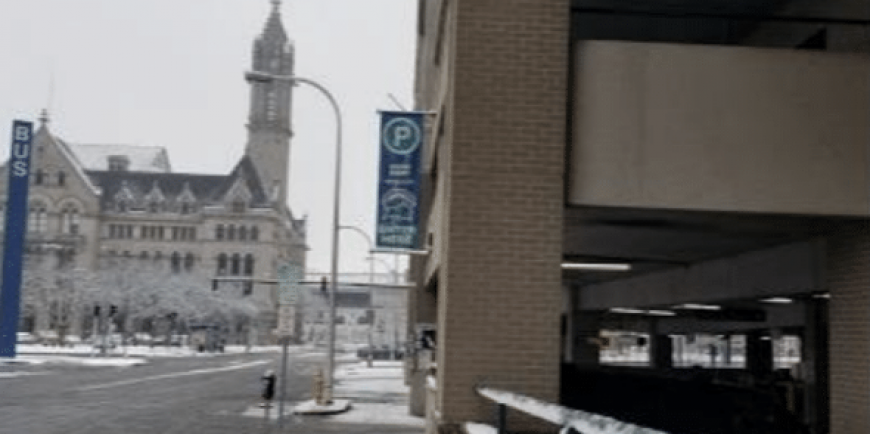Project info:
Efficiency Measure:
Type:
Client:
Engineering Design:
Building:
Key Results:
DESCRIPTION
Since 1954 Buffalo Civic Auto Ramps (BCAR) has been a nonprofit entity, independent of the City of Buffalo, formed to manage downtown Buffalo parking facilities. Adam ramp, one of seven ramps in the city is one of the largest, with seven levels including roof top parking.
After embarking on LED lighting upgrades in 2018, the executive management was open to how additional energy efficiencies could be realized through the application of lighting controls. Prior to the implementation of controls, interior lighting was illuminating all levels – all the time – even when there were no cars parked on the levels. Green Building Partners in partnership with Intellastar (and Entuit wireless devices) developed a proposal to control the lighting more efficiently. National Grid’s energy efficiency team was engaged to determine what the level of incentives would be resulting from achieving the following lighting control strategies:
- Daylight harvesting. Wireless (and battery-less) sensors equipped with lumen readers activate perimeter lighting circuits only when the ambient light levels from outside were insufficient.
- Motion and lumen sensors on upper levels would turn on lighting only when activated by motion (i.e. a car or person). Additional sensors were placed at the elevator and stairwells.
An initial energy savings analysis was developed by Green Building Partners and was accepted by National Grid for calculating the custom rebates provided. The analysis showed a gross annual kWh savings of 69,343, with an estimated annual electric cost of $6,241. With $9,084 of incentives from National Grid, the simple payback on this project was 2.7 years.


